New control principle: DARPA / Aurora CRANE pilot project
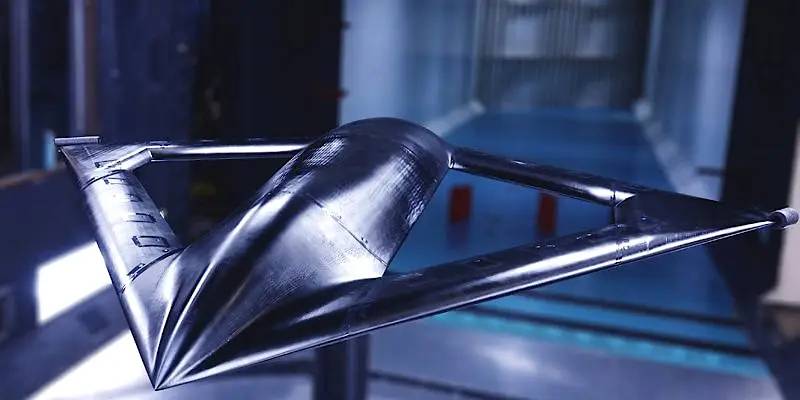
An early version of the purge model
Since 2019, the American Advanced Research Agency DARPA has been engaged in the CRANE experimental program. Its goal is to create and test an aircraft-type aircraft with an unusual way of flight control. Until recently, the program was at the competitive stage, and several companies developed their preliminary projects. Now DARPA has chosen a winner to continue the work.
Competitive stage
In August 2019, the DARPA agency announced the start of work on the topic CRANE (Control of Revolutionary Aircraft with Novel Effecters - “Control using new devices for advanced aircraft”). It was reported that the purpose of this program would be research and development of the technology of the so-called. active air flow control (Active Flow Control - AFC). This principle was going to be studied in the laboratory and with the help of an experimental aircraft.
At that time, the agency planned to invite potential developers and hold a "technical proposal day" with their participation. After that, the program could move to the stage of preliminary research and competitive design. This part of the work was designated as Phase 1.
The desire to participate in the pilot program was expressed by several major developers aviation technology. One of the contestants was Aurora Flight Sciences, a subsidiary of Boeing. In 2019-20 she joined CRANE and began doing the necessary research.
The research and competitive "phase-1" of the program continued until recently. At the end of last year, the customer, represented by DARPA, received the results of the work of four contestants, studied them and made his decision. Aurora Flight Sciences was declared the winner of this stage. Her project was considered the most successful and promising in terms of fulfilling the tasks.
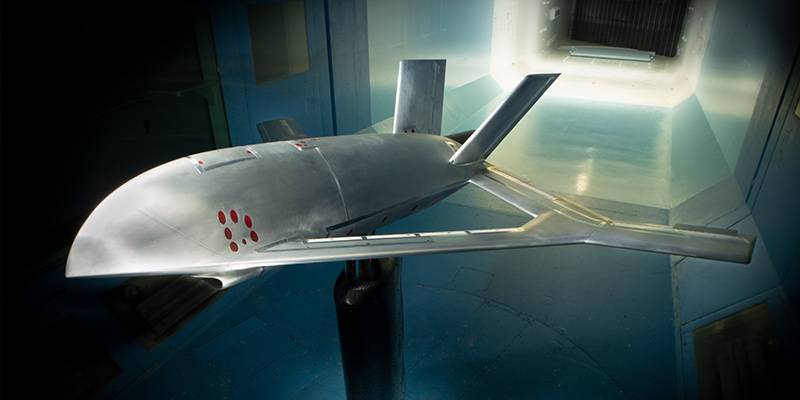
Improved model
Plans for the future
The results of "Phase 1" were announced on 17 January. On the same day, the DARPA agency issued a contract to the winning company to perform subsequent work. The cost of the contract and the timing of its implementation are not reported. At the same time, the customer and the contractor published press releases in which they disclosed part of their plans for the near future.
At the previous stage, Aurora Flight Science specialists conducted theoretical studies and developed several options for the appearance of an aircraft with AFC. Then the models were made and tested in a wind tunnel. In the course of this work, we found the optimal design option, confirmed its potential and identified ways for further improvement.
Now the CRANE project from Aurora is moving on to the next phase of Phase 2. Its goal is to create a technical project with the development of all key elements and technologies. The contractor must create an aircraft airframe of a characteristic design, as well as complete the development of a complete and workable AFC control system with all software and hardware.
As part of the next “phase-3”, the development company will have to build a technology demonstrator and conduct its flight tests. Aurora already reports that such an aircraft will have a 30-foot (9,1 m) wingspan and a take-off weight of 7 pounds (approx. 3180 kg). Due to this, it will be possible to more fully determine the potential of the new technology in relation to full-size aircraft and UAVs.
Aurora Flight Science and DARPA plan to collect a large amount of data that will allow us to draw final conclusions. If during the three phases active flow control lives up to expectations, then this technology will be further developed and even reach use on aircraft. However, the appearance of promising aircraft or UAVs with AFC is still a matter of an uncertain future.
Technical solutions
Aurora and DARPA have previously shown purge models for "phase-1" and computer graphics with a promising aircraft. The published materials generally allow us to understand what the future technology demonstrator, and then a full-fledged aircraft, could be like.
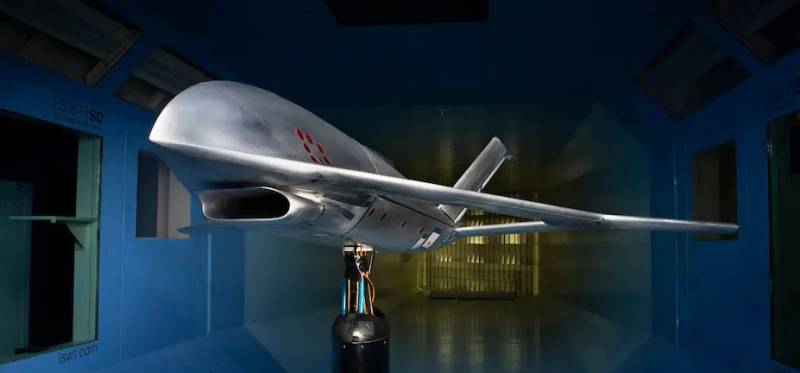
All versions of the test models were built using a streamlined fuselage with a pointed nose and a flat bottom. Below on such a fuselage, in front of the root of the wing, there was an air intake. The turbojet engine is located in the tail of the fuselage; the nozzle is extended beyond the trailing edge of the wing. As the research and development of the project, the shape of the fuselage changed, but the main decisions remained the same.
The CRANE product from Aurora has received an unusual wing, both in appearance and design. Already in the early stages, a diamond-shaped wing was used. A characteristic feature is its "frame" design - each plane has a front and rear edge, between which there is a triangular window.
According to the results of the first studies, such a wing was supplemented with straight consoles at the tips of triangular planes. They also decided to abandon the "flying wing" scheme and installed collapsed keels on the fuselage. Reportedly, different options for additional planes and plumage were tested.
The wing and empennage of the models shown do not have traditional aerodynamic rudders and use the AFC system instead. Four sets of nozzles are placed on the upper surface of the wing along the spars, supplying compressed air backwards in the direction of flight. The operation of the nozzles is provided by an air intake, a compressor and control devices.
The AFC system offers an unusual way to control flight and seriously changes the aerodynamics of the aircraft. So, an unusual wing "with windows" has sufficient characteristics for flight, and the supply of compressed air from the nozzles allows you to control its aerodynamics. By changing the air pressure in the nozzles, it is proposed to control the speed of the air flow near the wing - and change the lifting force of the latter.
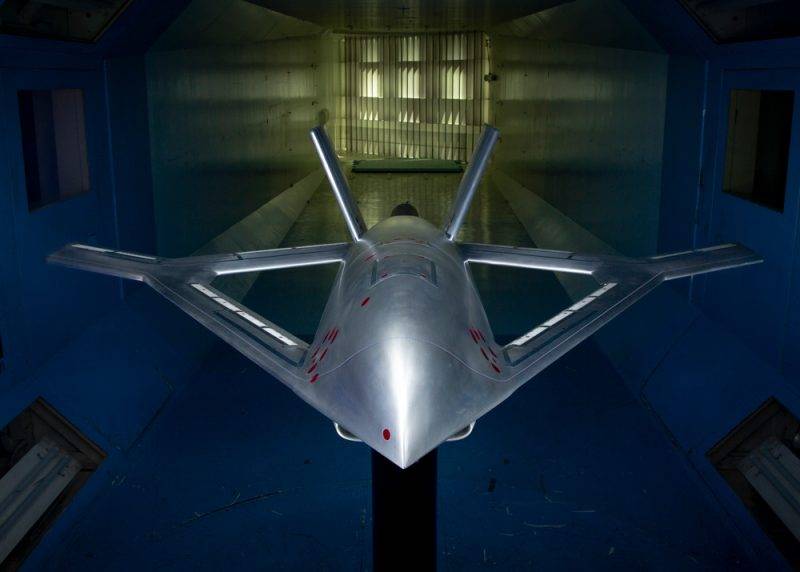
The design of the wing with four sets of nozzles allows you to perform all basic maneuvers. A synchronous change in the lift force of both planes should provide climb or descent. For rolls and corresponding maneuvers, the parameters of the planes should be changed differentially. Flow control means can be placed not only on the wing, but also on the tail and provide appropriate maneuvering capabilities.
Advantages and disadvantages
It is assumed that the AFC system has advantages over traditional aerodynamic rudders. The main ones are related to the absence of moving elements operating in the air stream. The use of AFC makes it possible to simplify the design of the wing, reduce its weight, and increase reliability. Avoidance of movable rudders in a known manner can simplify the maintenance of the aircraft.
Flow control can be of great interest in the context of stealth technologies. The fact is that movable rudders and / or stabilizers are able to reflect the probing signal to the radar and unmask the aircraft. The AFC system does not change the shape of the aircraft and eliminates such risks. In addition, in theory, it allows you to create an optimal configuration of planes, further reducing visibility, without loss of maneuverability.
However, as practice shows, the AFC concept, with all its advantages, is quite complicated in terms of practical implementation. Such a system needs a special wing, a number of specific units, etc. In addition, control devices are required that can receive and process data from a mass of sensors, receive pilot commands and respond correctly to all these factors.
Aurora has yet to develop a fully functional control system for AFC. At the moment, the creation of such tools is one of the main tasks of the CRANE program. Without its successful solution, the development of new technologies will not be able to move forward, and it will not be possible to count on their implementation in practice.
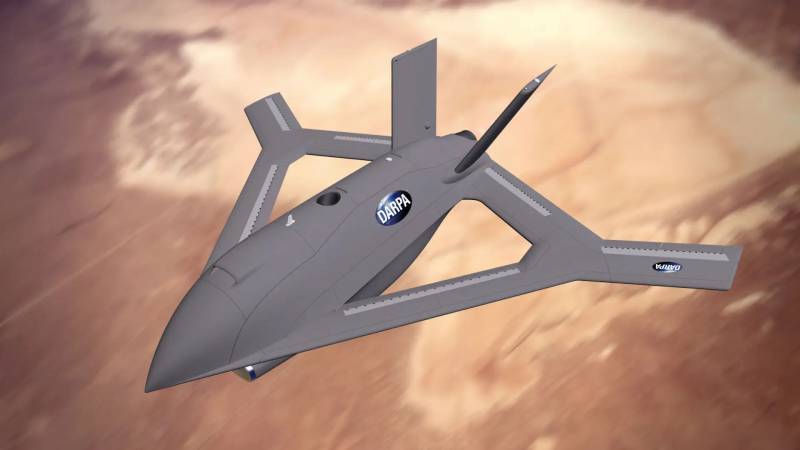
Drawn apparatus CRANE in flight - the rows of nozzles on the wing are clearly visible
In general, the proposed concept is of interest from a technical point of view. It allows you to solve known problems and even get some benefits. However, the feasibility of the widespread introduction of AFC is questionable. The CRANE program actually proposes to replace the "complex" steering wheel with wiring with a "simple" complex of various means. Far from always such a replacement will make sense.
Difficult prospects
Thus, the DARPA agency, together with commercial contractors, is once again engaged in the study and development of promising technologies in the field of aviation. As part of the current CRANE program, it is planned to bring to practical use a fundamentally new method of flight control.
To date, the project has passed the stage of the first research and testing in a wind tunnel. Aurora Flight Science is now faced with the challenge of developing a complete prototype aircraft and all of its key systems. Whether it will be possible to create such an aircraft or UAV and demonstrate its characteristic qualities will become known in a few years.
Information